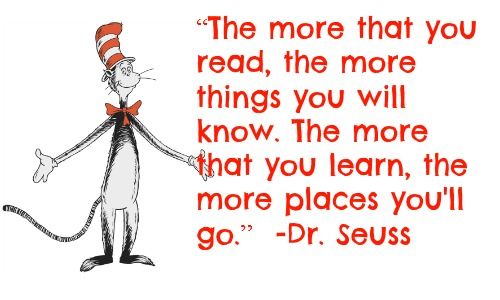Reading
Reading is one of the most fundamental skills children need to learn to be successful, not only academically but throughout their life. Amongst other things, reading develops vocabulary, increases attention span and promotes stronger critical thinking. It is therefore vitally important that we promote reading to our children, here are my top 3 tips.
Tip 1: Create a special place for reading at home
Thinking back to my school days, I can remember a certain teacher who used to send 'naughty' children to the book corner which of course sent out the message that you only went there if you had done something bad... thankfully times have changed! As a supply teacher, I visit many different schools and classes and have seen some amazing reading areas that are decorated in various themes, full of cosy cushions and bean bags with row upon row of exciting books to explore. So my number 1 tip for promoting a love of reading would be to create an exciting reading space at home. There are plenty of ideas online from pop up tents to elaborately themed and decorated rooms but it doesn't have to be expensive, in fact you probably have all the things you need at home, for example, fairy lights, cushions, bean bags and of course books! Why not make it a joint project, creating the space together will give the children some ownership and get them excited about using it once it's ready.
Tip 2: Show children that books can be just as exciting as toys
Unlike favourite toys which get played with constantly, once we've read a book it tends to sit gathering dust on a book shelf. But there's so much more to texts than just reading them and once you close the book, the adventure does not have to end there.
Children's fiction, and non fiction for that matter, can lead to a number of fun and creative activities, here are just a few ideas to get started with using The Lighthouse Keeper's Lunch as an example:
- making puppets of the main characters to use when retelling the story
- baking buns for the lighthouse keeper
- building a model of the lighthouse
- designing a new system for delivering Mr Grinling's lunch safely
- creating a new book cover or illustration for the story
If we can demonstrate to children that reading a book can be just as exciting as playing with a toy then they will rush to the book case just as quickly as the toy box.
Tip 3: Develop a reading culture at home
Reading opens up a child's world, it introduces them to new things and new places, it is essential for vocabulary, language and social development and the earlier children are exposed to books the more beneficial it is.
There are many things you can do to promote good reading habits, many of which you probably already do:
- Establish a reading tradition: setting aside a certain part of the day or week to read together or independently. Of course time is an issue in a busy household so if you don't have a spare 30 minutes, then read for 10 minutes . Do what you can with the time you have.
- Be a good role model: children learn from example and if they see how much enjoyment you get from reading they are more likely to become readers themselves.
- Read together: parent to child, sibling to sibling, grand parent to grandchild and vice versa! This is a fabulous bonding experience and doesn't have to just be consigned to reading story books. Newspapers, magazines, recipe books, instruction manuals and so on can all provide good reading opportunities.
- Get into it: explore texts with your children rather than just reading the words. Ask them questions to check they are taking in what they are reading. Ask their opinions on various aspects of the story, for example, what do they think of the characters or the authors use of language? Get them to make predictions on plot and characters. Then review a book once it is finished, just like your own book club!
- Make up stories together: start with a character they love. For example, my brother and his 2 girls used to make up stories about Shrek and various adventures that he went on. This is a brilliant way to develop their creativity, imagination and thinking skills.
- Visit libraries and book shops together: get children into the habit of exploring a book before reading it. Look at the front cover - what do they think the book is about? Read the blurb - is it the sort of story/book that would interest them? Is it suitable for them? This provides an excellent opportunity for children to learn how to preview and select what to read - a very important part of reading for pleasure.

